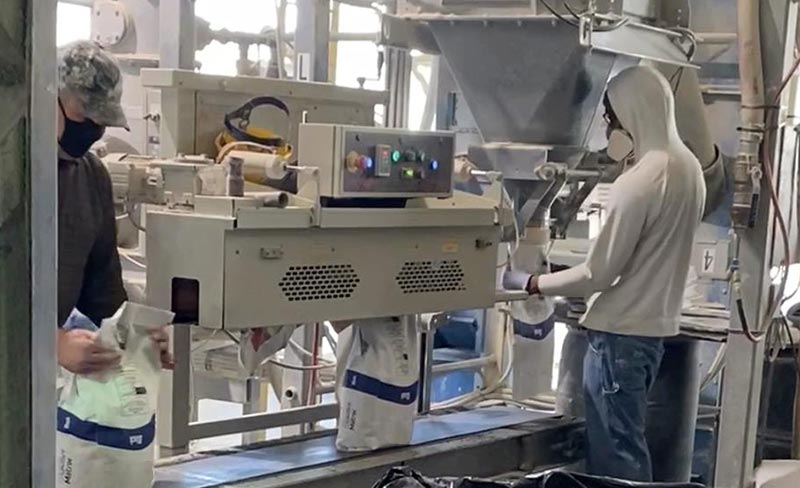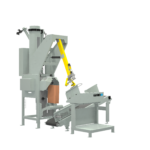
There are various types of bagging machines available for filling, weighing, and sealing open mouth bags with a variety of products. These machines are designed to handle powders, pellets, flakes, granules, and fibrous materials with a high degree of accuracy and efficiency.
Manual bagging machines are typically used for small-scale operations or for filling bags with products that are not sensitive to variations in weight or volume. These machines typically have a hopper or feeder that allows the product to be added to the machine, and a filling mechanism (such as an auger or pneumatic system) to transfer the product into the bag. The bag is then weighed and sealed manually by an operator.
Semi-automated bagging machines are similar to manual bagging machines, but they may have additional features such as bag handling equipment and automatic weighing and sealing systems. These machines are typically used for medium-scale operations and are suitable for products that require more precise filling and sealing.
Fully-automated bagging machines are designed for large-scale operations and handle all aspects of the bagging process automatically, including bag handling, filling, weighing, and sealing. These machines may be integrated with other equipment or processes in the production line and are suitable for high-volume filling of products that require precise weight and volume control.
When choosing a bagging machine, it is important to consider the size and weight of the bags being used, the type and flow characteristics of the product being filled, and the required filling accuracy and speed. It may also be necessary to consider the layout of the production facility and any space constraints when selecting a machine.
zhong@fhopepack.com



